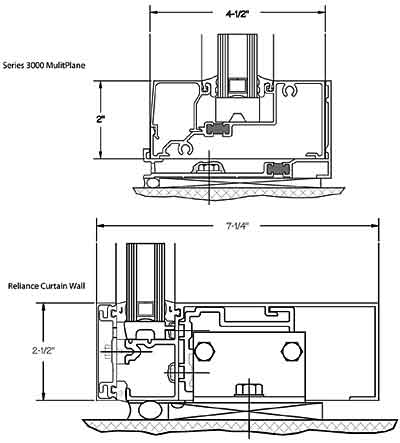Architectural Aluminum Curtain Wall Systems
"You can go to the sites and pull up details. There are specification and performance criteria," Grunewald says. "It is important that you read the performance requirements. What you end up with is a cut-and-paste Word document, a reproducible file that can be transported directly to design documents. The same is true with product details. Most manufacturers offer a wide variety of products with various levels of performance and aesthetic attributes. When the designer has determined the structural requirements and elevation configurations, the manufacturer can assist with specifying a product that meets both the performance and aesthetic needs of the project.
Historically, architectural aluminum framing systems generally were limited in color to gray, black or bronze (anodized). Today, specialty coatings mean that systems are available in nearly any color. As much as half the product lines of some manufacturers today are coated.
|
"The systems are also becoming less complicated to install and more flexible in their applications," Grunewald says. Tomorrow's systems will be even more installer friendly, he says, and nearly all manufacturers are developing systems that can be unitized, pre-fabricated and assembled off-site. Because off-site labor costs can be better controlled and the product can be assembled and sealed in a protected environment, unitized and pre-assembled units are likely to make architectural framing systems increasingly cost competitive.
"High-performing, unitized systems, which some aluminum framing manufacturers now offer and others are turning to, still are a little bit more expensive than stick-built, maybe in the range of 20-25 percent more," says CDC's Johnson. "But these systems offer secondary water control.
That issue is our biggest hang-up in this industry, always has been, always will be. Secondary control covers your backside. Even if the system leaks, you don't hear about it. A lot of owners don't want to spend the extra money, but they are the first to squeal when water run down the inside of the glass. Secondary systems should be mandatory."
Tomorrow's architectural framing systems will be developed with heightened consideration of sustainability, will see even higher thermal performance, will accommodate specialty glazing-photovoltaics, for example-"and the bar keeps being raised in terms of water and air infiltration," says one manufacturer.










